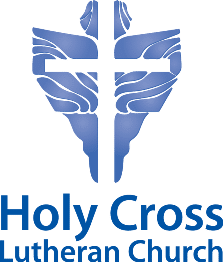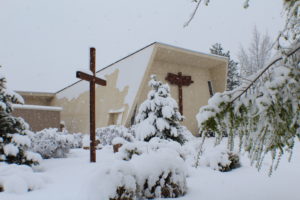 This cross was crafted with 4 inch by 4 inch beams
This cross was crafted with 4 inch by 4 inch beams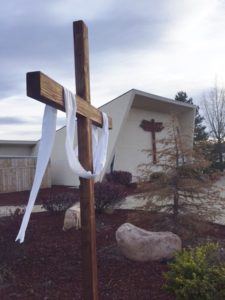
We draped a black cloth over the horizontal beam on Good Friday and then on Easter morning, removed the black cloth and draped the cross with a white cloth.
Cross on exterior wall facing McCarran
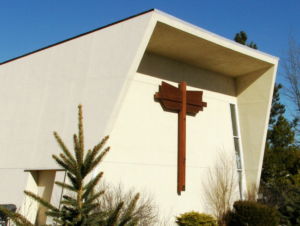
Cross on exterior wall near entrance
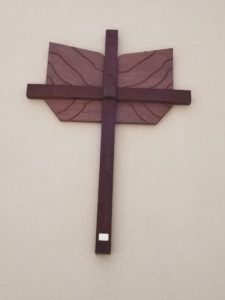
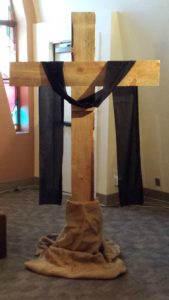
The Processional Cross
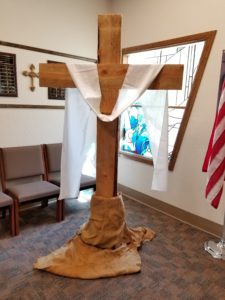
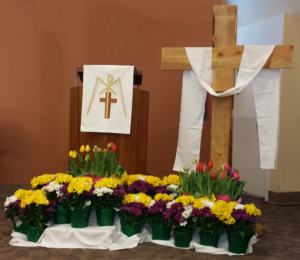
Sanctuary Cross
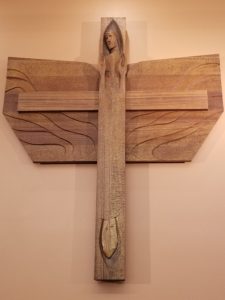
Ernst Schwidder (1931-1998) is the artist of the cross in the sanctuary, along with the baptismal font and dove/Holy Spirit sculpture which accompany it. His father had been pastor of Trinity Lutheran Church in Seattle; in fact, there had been Lutheran pastors in his family since the days of the Reformation. Schwidder’s works are in over 90 churches in the state of Washington and over 300 churches across the United States.
He earned a Masters of Fine Arts at the University of Washington. In 1959, he became the first head of the Art Department at Valparaiso University in Indiana. His career as a liturgical artist coincided with the great post-World War II church building boom. Taking a leave from Valparaiso, he went to work as a designer of chancels and chancel furnishings in the Charles Stade workshop. In 1963, he gave up his chairmanship to work fulltime with Stade.
Much of the information about the sanctuary cross is summarized from articles from the website schwidderart.org, which serves as a repository of Ernst Schwidder’s work. The aim of the curators is, in part, to assist parishioners to treasure visual art as an enhancement to worship.
